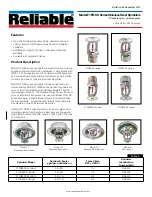
Selecting an Application Programming Interface
6-3
Direct I/O Application Programming Interface
The Direct I/O interface uses the methods of an ActiveX Automation
object to access the PIO hardware. This interface has the following
advantages:
●
Operating system independence
—
Both Windows 95/98 and
Windows NT support this interface.
●
Intel 8255 emulation
—
This interface uses the I/O address map and
programming protocols of Intel’s 8255 chip.
●
Fast hardware access
—
This interface provides the fastest access to
the hardware registers of the two interfaces.
●
Versatility
—
Most Windows compilers and scripting languages
support ActiveX Automation objects.
●
Native hardware register access
—
For special-purpose
applications, this interface also supports product-specific access to
the hardware registers.
●
Speed of single-value I/O
—
The I/O performance of this interface is
the fastest of the two interfaces when using early binding to the
interface.
The Direct I/O interface also has disadvantages:
●
Incompatible with DriverLINX
—
Applications cannot use this
interface with DriverLINX for the PIO Series either in the same or
another application.
●
32-bit only interface
—
16-bit applications cannot use this interface.
●
Non-exclusive hardware access
—
This interface does not
synchronize or coordinate hardware access among threads or
processes.
●
8-bit I/O only
—
The Intel 8255-based methods only support 8-bit
hardware access.
●
Supports subset of hardware features
—
This interface does not
support using interrupts.
●
ActiveX Interface
—
Using Automation objects in some C++
compilers is more difficult than in Visual Basic.
Artisan Technology Group - Quality Instrumentation ... Guaranteed | (888) 88-SOURCE | www.artisantg.com
















































